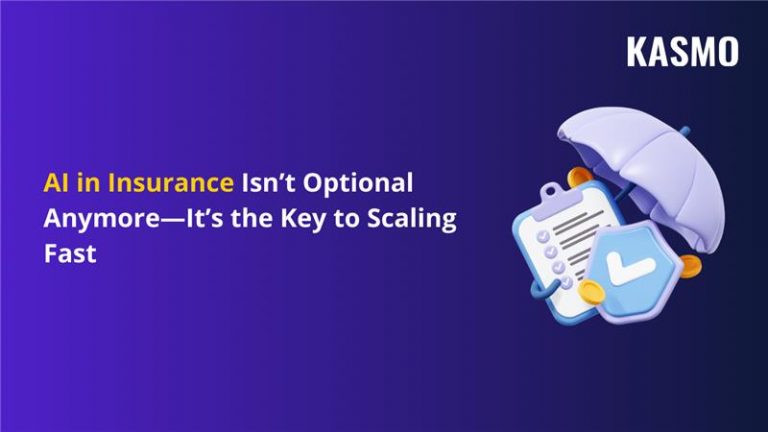The use of Data and AI has led to a transformation in insurance. This industry has traditionally struggled with siloed systems—underwriting, claims, compliance, and customer service often operate on fragmented data sources. The potential use of data and AI is helping in several aspects, like pricing and risk selection, claims management, contact center optimization, distribution management, reinsurance, and more
According to McKinsey, AI has made a measurable impact on key parts of insurance businesses,
-10–20% improvement in new-agent success rates and sales conversion
-10–15% increase in premium growth
-20–40% reduction in customer onboarding costs
-3–5% boost in claims accuracy.
In this blog, we explore the role of data and AI in insurance to enhance efficiency, drive growth, and deliver more personalized customer experiences. Further highlighting how Snowflake empowers insurers to adopt these innovations effectively, ensuring both scalable and sustainable growth.
The Growing Role of Data and AI in Insurance
The explosion of digital channels, connected devices, and new forms of risk has created an unprecedented volume, variety, and velocity of data. Traditional systems and processes simply cannot keep up.
Actuaries and underwriters have historically relied on data to assess risks, determine pricing, and manage claims. Modern insurers face rising customer expectations and other challenges. This demands a data-driven operating model that can deliver speed, accuracy, and transparency.
Certain factors heading this change include-
Policyholders now expect seamless, personalized digital experiences. Insurers are under pressure to deliver instant quotes, quick claims settlements, and tailored policies.
Data in insurance is helping modern insurers to gain hidden insights. Traditional insurers must adapt to remain competitive or risk losing market share.
Claims processing, underwriting, and customer support are often cost-intensive. AI-driven automation not only reduces costs but also improves accuracy and turnaround times.
Regulators increasingly expect insurers to maintain transparency in pricing, claims handling, and reporting. AI can help insurers meet compliance requirements while reducing operational overhead.
Key Use Cases of Data and AI in Insurance

Underwriting and Risk Selection
Historically, underwriting has relied very heavily on historical data and tended to be quite manual in execution, often with inefficient and conservative risk assessments. Insurance companies are linking their first-party data – from IoT devices, including telematics and wearables – with the third-party data sources. This helps insurers by providing a more comprehensive view of policyholders.
These customer profile data are used as inputs to machine learning models for better risk selection. Continuously update risk profiles as new data streams in, enabling real-time decision-making. Combined with analytical models and other means of automation, insurers are shifting to a more automated, clear, and objective underwriting methodology. This improves pricing accuracy and loss ratios while decreasing expenses and reducing the quote-to-bind timeframe.
Claims analytics and Copilots
Claims processing is one of the most critical and customer-visible functions in insurance. Using the insurer’s data and AI, the copilots act as interactive, virtual companions that assist with organizing and then executing routine work. Copilots can provide summaries of claim understandings while presenting additional guidance and recommendations. Using AI copilots to guide claims adjusters with recommended next steps, reducing resolution time, and helping claims teams to offer understanding and personalization support to customers.
ML models help insurance companies to trigger claims while prioritizing high-risk claims, process faster, improve efficiency, and customer satisfaction. Finally, forecasting, based on past data, the probability and estimated losses of future claims, leads to better financial planning, reserve funding, and ensures insurers are appropriately funded to meet future payouts.
Fraud Prevention and Detection
Traditional rule-based systems often fail to catch complex fraud schemes, costing billions annually. AI models learn from large volumes of historical data to identify common patterns of fraud, such as abnormal repair costs, inconsistent treatment approaches, or claimant histories indicating potential fraud. Data and AI have a major role in preventing it; they help insurance companies in several ways:
-AI identifies outliers where claims deviate from normal behavior that employees might miss; they are then flagged for follow-up.
-Predictive analysis can provide a fraud probability score for each claim, helping insurers to prioritize high-risk claims for human review to analyze financial outlay before processing.
-Advanced analytics and machine learning models enable insurers to identify unusual behaviors or inconsistencies in claims submissions, aiding in flagging and investigating suspicious claims before a payment is made.
Customer Experience and Engagement
As insurance moves increasingly into entirely digital-based and focused business models, the role of data and analytics to engage with customers is more important than ever. With multiple touchpoints like webpages, mobile apps, social media, etc., higher volumes of data are available for customer analytics. It enables businesses to understand and predict customer behavior and preferences and deliver a personalized experience.
Customer analytics provides an understanding of efficiency and customer satisfaction across different channels, allowing businesses to improve their engagement strategies.
By customer segmentation into different groups based on their behaviors, preferences, and needs, insurers can deliver better service.
Sentiment analysis provides insights into customer emotions and opinions from different channels. This insight helps insurers understand the overall sentiment of customers, pinpoint areas of dissatisfaction, and encourage strategies to improve customer experience.
How Snowflake Empowers Insurance Companies?
The Snowflake Data Cloud simplifies data access, enables secure collaboration, and addresses key challenges faced by insurers while scaling workloads seamlessly. Snowflake, using data science and ML-driven automation, empowers insurers to harness data for smarter risk assessment, optimized pricing and policy design, and improved customer journey.

Single Data Platform
Snowflake provides a single unified data platform for insurers to perform data engineering, advanced analytics, regulatory reporting, and fraud detection. This empowers organizations to eliminate silos and ensure accuracy across functions. Enabling mission-critical insurance use cases such as underwriting transformation, intelligent claims management, regulatory compliance reporting, and customer analytics.
Underwriting
Underwriting is at the heart of insurance, and its accuracy directly impacts profitability. Financial Services Data Cloud enables insurers to use data science and ML to automate routine tasks in underwriting workflows. Snowflake helps to transform data pipelines by aggregating and synthesizing data from various sources to feed sophisticated risk assessment models and algorithms for developing a comprehensive understanding of risk. It also integrates 1st and 3rd party information and ML frameworks to build pricing and risk selection models. This enables underwriters to shift from manual, retrospective assessments to data-driven, proactive risk selection.
Claims Management
Modernizing claims management is essential to improving overall customer experience. Snowflake enables insurers to
- Apply machine learning models at First Notice of Loss (FNOL) or First Report of Injury (FROI) to approve priority claims, assign severity, and prioritize processing.
- Use predictive models to detect fraud, recommend settlement ranges, or identify cases requiring human adjusters.
- Snowflake’s underwriting solution enables streamlined workflows, so policyholders receive quicker, more transparent resolutions.
Unified 360-degree Profiles
Building engaging customer relationships is essential for insurers. Snowflake helps to create 360° profiles by combining policyholder, business, and insurance data to get a comprehensive view. This helps to track every customer interaction across all channels to gain potential customer journey analytics, optimize contact center performance, and drive data-informed sales and distribution strategies.
Conclusion
Data and AI in insurance deliver potential benefits. Every aspect of insurance now depends on derived valuable data that is accurate, timely, and connected from multiple sources. From underwriting and claims management to fraud detection, other data analytics are enhancing efficiency and performance.
Snowflake Data Cloud helps insurers with the fundamental abilities to effectively leverage data and AI to scale. Insurers can streamline workloads by integrating them into a single platform and breaking down silos, improving efficiency, and accelerating innovation. With capabilities like real-time analytics, secure data sharing, machine learning integration, and governed data access, Snowflake enables insurers to transform legacy processes into modern, intelligent workflows.




